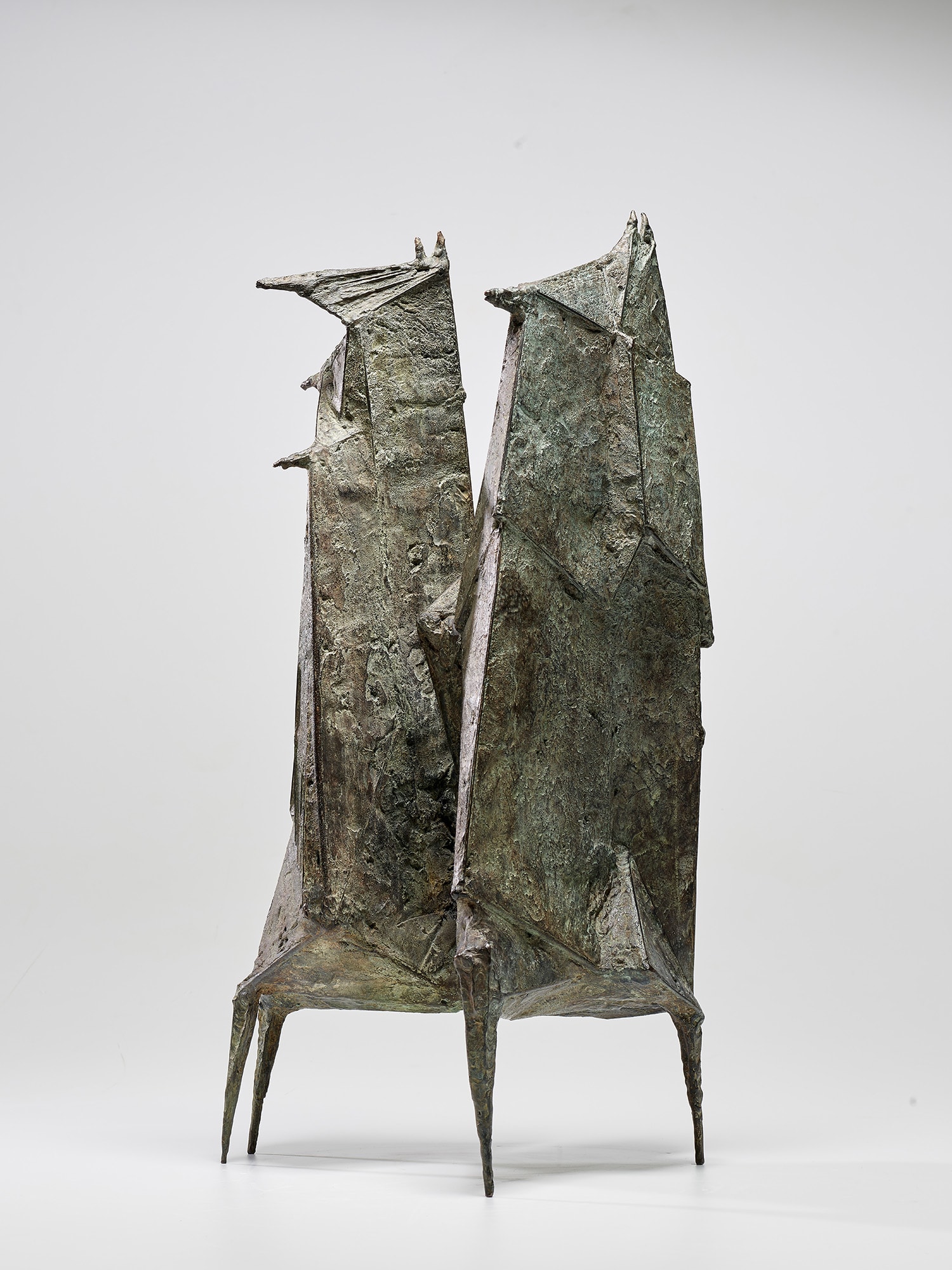

28
Lynn Chadwick, R.A.
Conjunction IV
stamped with the artist's monogram and incised with the number 'C 254 E A 1' on the underside
bronze
64.5 x 32.5 x 30.5 cm (25 3/8 x 12 3/4 x 12 in.)
Executed in 1958, this work is an artist's proof from an edition of 9 plus 2 artist's proofs.
We are grateful to Dr Sarah Chadwick for her assistance with the cataloguing of this work.
We are grateful to Dr Sarah Chadwick for her assistance with the cataloguing of this work.